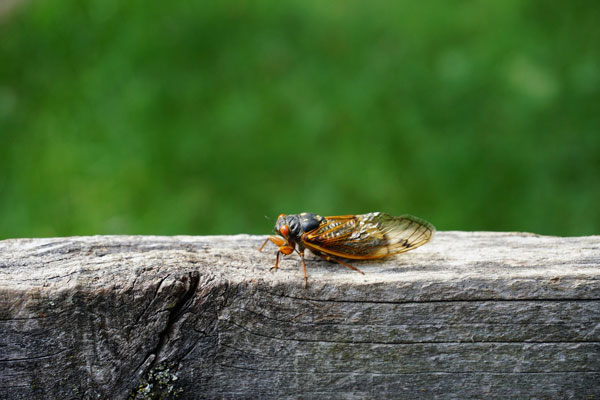The cicadas are coming this summer to the United States

[Cicada. Photo Credit to Pixabay]
This summer, a large swarm of cicadas is expected to appear in the United States.
In the eastern United States, two common types of cicada are found: Annual and periodical cicadas.
According to the U.S. Environmental Protection Agency, the annual cicadas emerge every summer, whereas periodical cicadas emerge every 13 or 17 years.
The Washington Post reported on the 20th that the periodical cicadas that were concealed under the ground for 13 years and 17 years will emerge on the surface level this summer.
In the U.S., 13 years the periodical cicadas (Brood XIX) and 17 years the periodical cicadas (Brood XIII) appear every 13 years or 17 years.
However, this summer is the year when Brood XIX and Brood XIII will emerge simultaneously.
This is because this year is the least common multiple of 13 and 17, which is 221.
The last Broods XIX and XIII’s made a simultaneous appearance 221 years ago, which was in 1803 when Thomas Jefferson was president.
Following this year, these two cicadas would not appear again at the same time until 2245.
Both annual and periodical cicadas emerge in different areas every year, but this year is unique since it is very rare for two different broods to appear in the same year simultaneously.
Unlike other common cicadas, the two types of Broods have very distinctive features: red eyes which distinguishes them from other common ones.
Moreover, they have an uncommon characteristic apart from others, which is spending more than 10 years underground to avoid cold weather in larval form.
Once the broods were above ground, they would eat, mate, lay millions of eggs, and then perish.
Female cicadas lay their eggs in trees in summer, which then fall to the ground and move underground, repeating the same process of staying underground for 13 or 17 years and reemerging.
John Cooley, an insect expert at the University of Connecticut, expects that the total cicada population could reach hundreds of trillions or 1,000 trillion.
John Cooley called this phenomenon using the term “cicada-geddon.”
Broods XIX and XIII usually inhabit across the Midwest and Southeast in 17 states (Alabama, Arkansas, Georgia, Illinois, Indiana, Iowa, Kentucky, Louisiana, Michigan, Mississippi, Missouri, North Carolina, Oklahoma, South Carolina, Tennessee, Wisconsin, and Virginia).
Cicadas begin to emerge when the soil 8 inches underground reaches 17.8 celsius degrees, a process accelerated due to climate change.
Meanwhile, the massive swarm of cicadas is resulting in lots of concern among people.
The concern comes from the cicadas’ 100 decibels noise and their dead bodies.
However, besides these psychological side effects, the cicadas are not harmful to humans, animals, and crops.
In fact, wild animals can even benefit from extra proteins and plants can benefit from good fertilizer.
In 2007, the Lavinia Festival in Chicago, Illinois was postponed due to the cicadas’ appearance and possible noise disturbances.
In 2021, a group of cicadas flew on a White House Chow Foundation charter flight from Dulles International Airport near Washington, DC, which caused problems with outside equipment, delaying takeoffs.

- Catrina Cho / Grade 11
- Saint Paul Preparatory Seoul

![THE HERALD STUDENT REPORTERS [US]](/assets/images/logo_student_us.png)
![THE HERALD STUDENT REPORTERS [Canada]](/assets/images/logo_student_ca.png)
